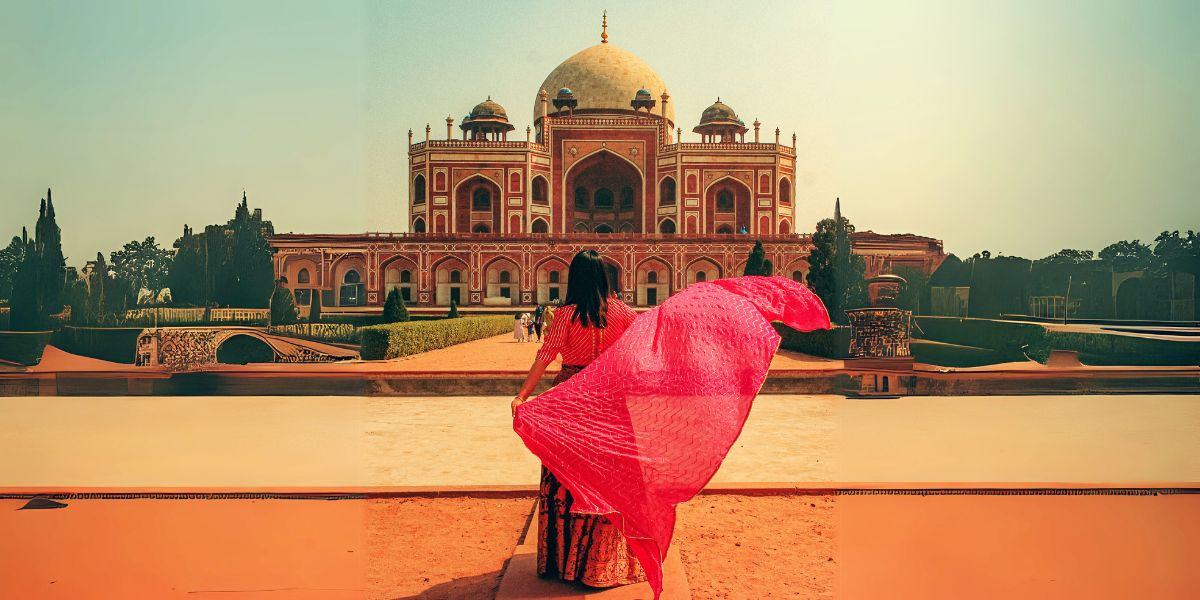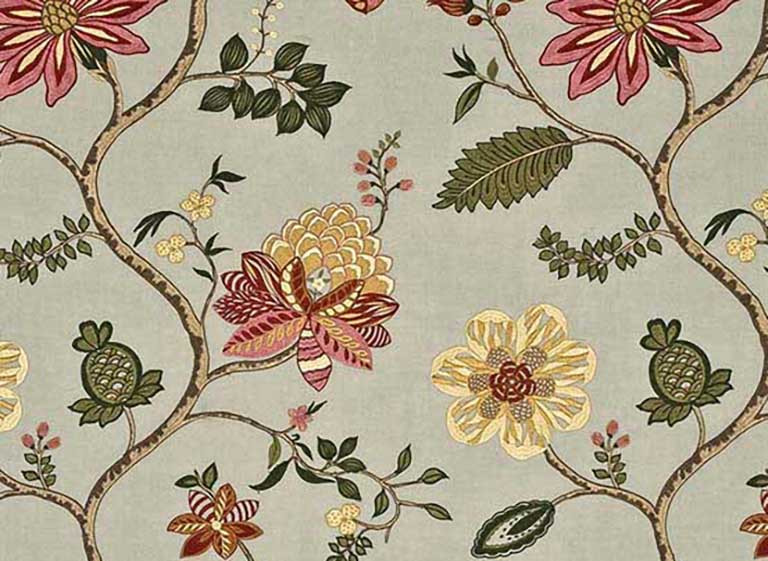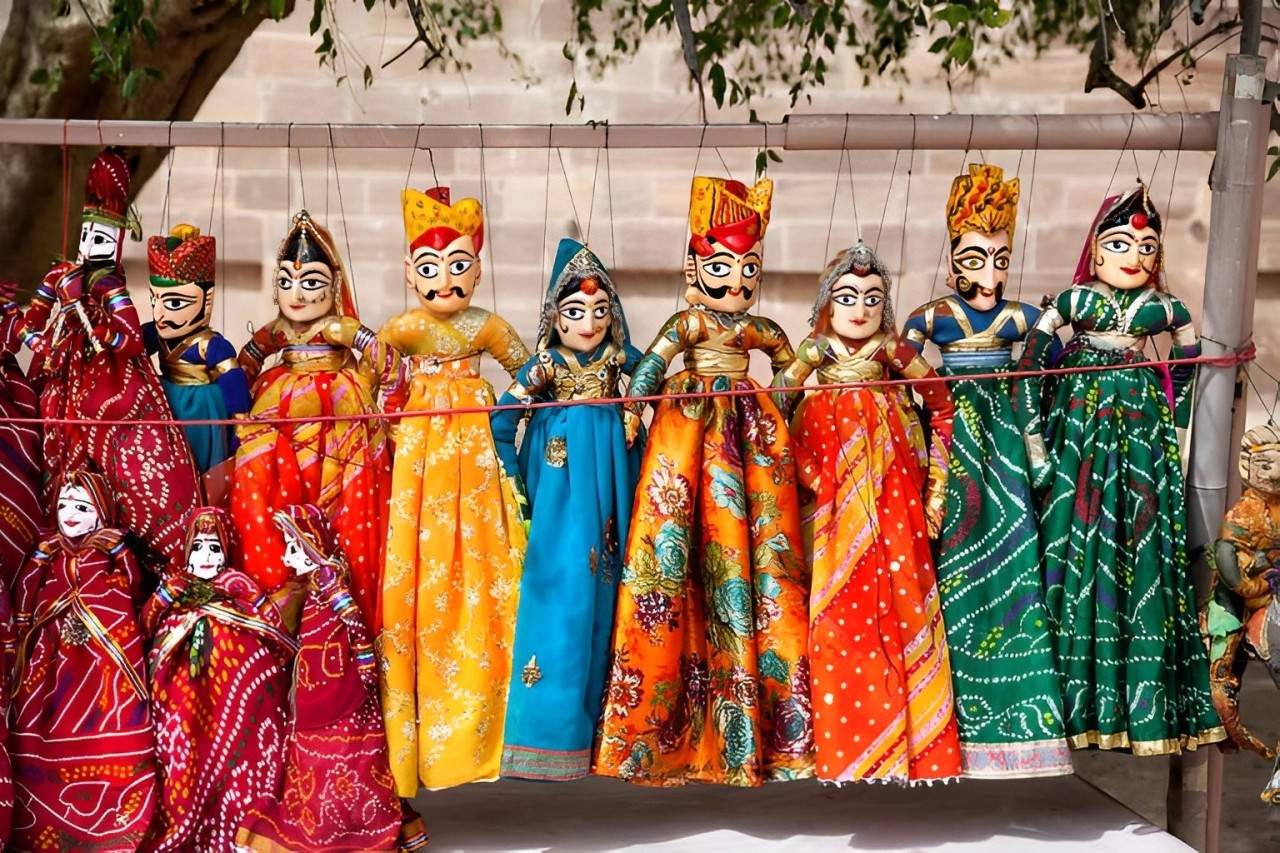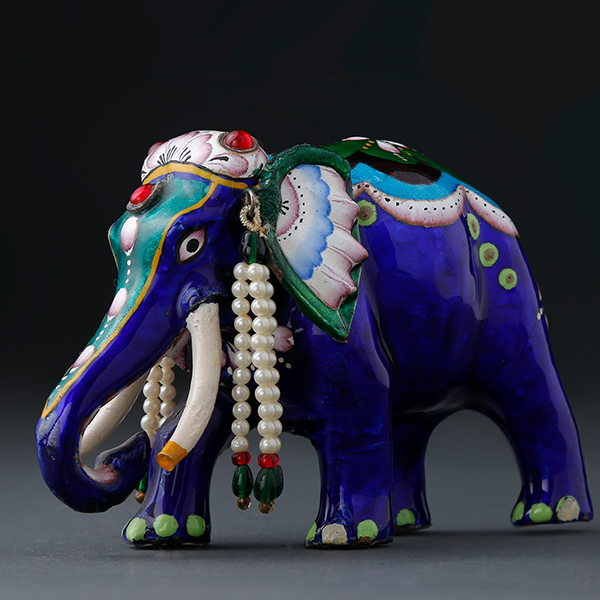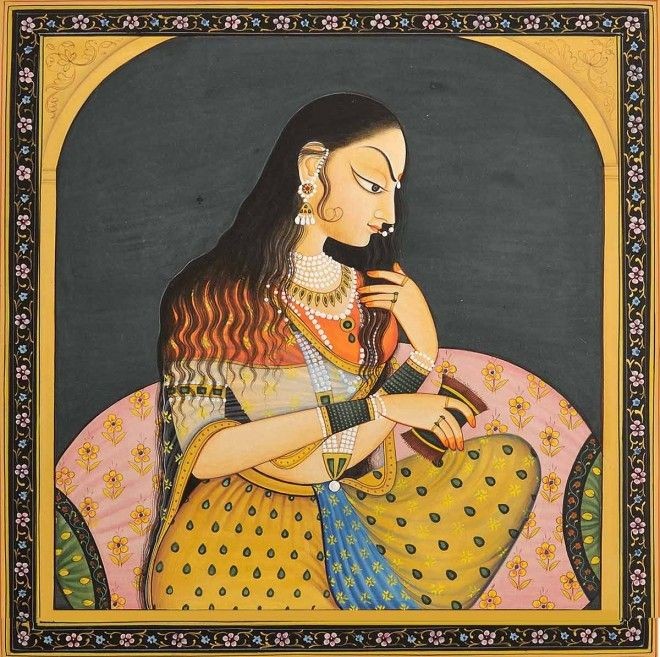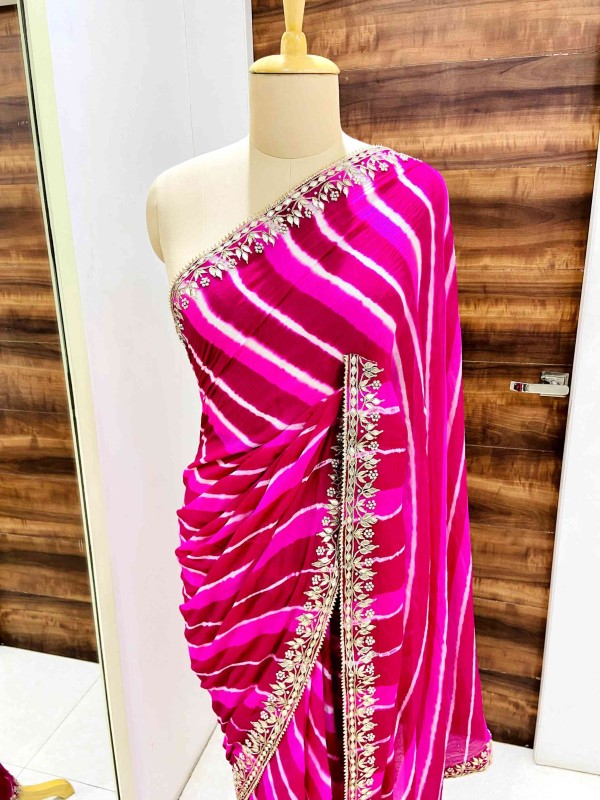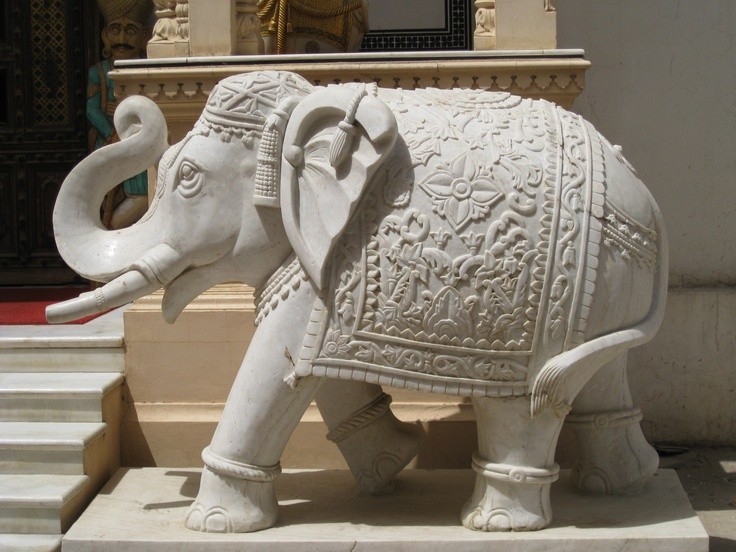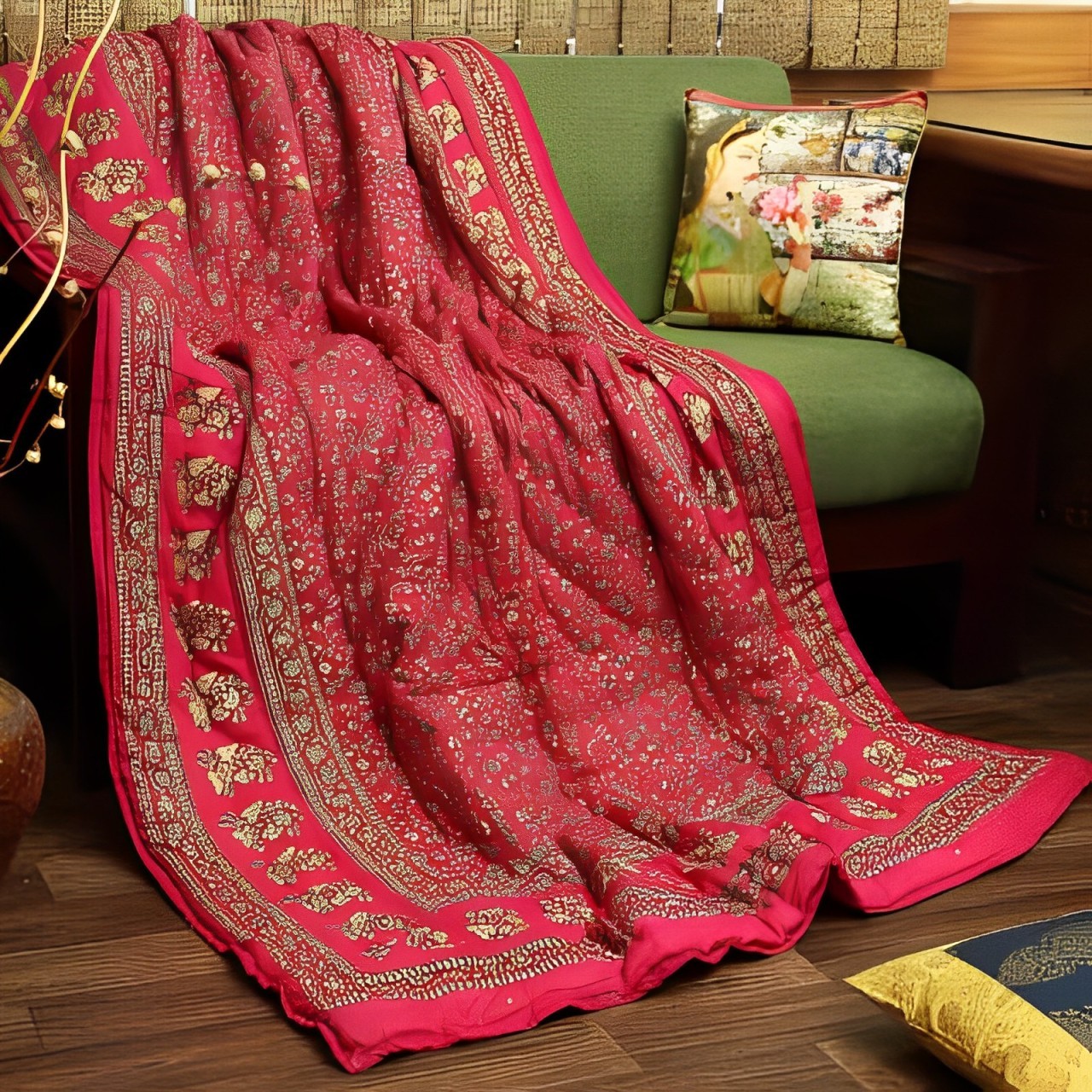Jaipur Jewellery
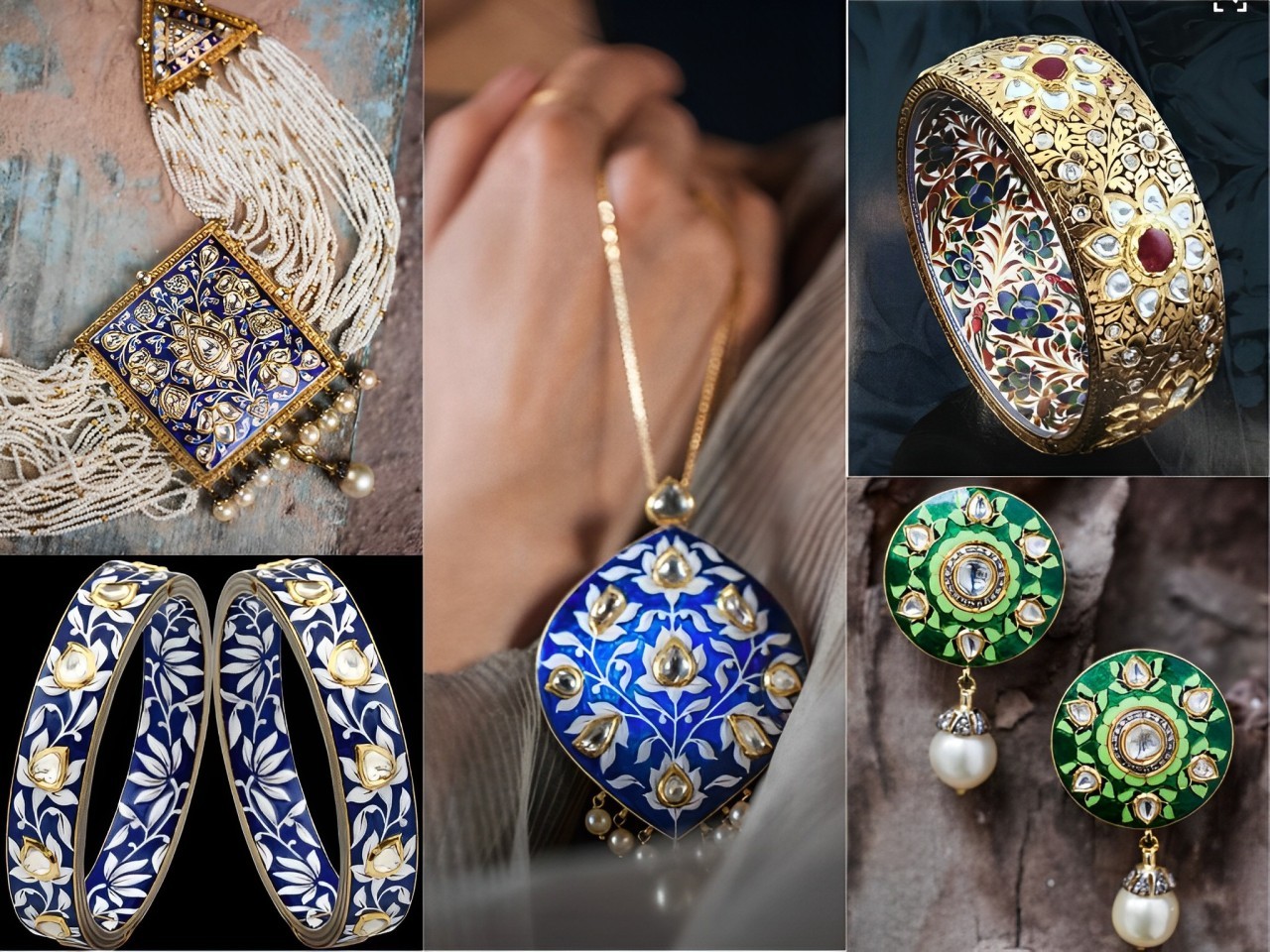
Jaipur is not only famous for its traditional architecture and rich culture, but also for its beautiful jewellery. The city has a long history of jewellery making, dating back to the Rajput era, and has become a hub for antique jewellery production in India. Jaipur, also known as the Pink City, is a major centre for traditional jewellery in India.
The city is known for its intricate designs and high-quality craftsmanship. Some popular types of Jaipur jewellery silver include kundan, meenakari, and enamel work. These traditional styles are often combined with precious and semi-precious stones to create beautiful and unique pieces. Many shops and markets in Jaipur offer a wide variety of jewellery, including bangles, earrings, necklaces, and more.
Types of Antique Jewelleries in Jaipur:
Thewa Jewellery: Thewa is a special art of jewellery making which involves fusing of intricately worked-out sheet gold on molten glass. It evolved in Pratapgarh district, Rajasthan India. Its origin dates back to the Rajput era.
Process -
Thewa is a traditional art of fusing 23K Gold with multicoloured glass. The glass is treated by a special process to have glittering effects, which in turn highlights the intricate gold work. The whole Thewa piece is hand crafted over a period of one month by skilled artisans. Thewa, an art that pulsates with life, caught seemingly in movement, in motifs used on jewellery, which shows the culture, heritage and tales of romance and valour of Rajasthan with nature and happiness depicting the art of the fine craftsmanship.
The process of making thewa work is detailed; time consuming and intricate, taking up to a month to complete each piece. It starts with broken pieces of terracotta, finely ground, mixed with chemicals and oil to produce a thick paste. The paste spread on a wooden base has a 23carat gold sheet of 40gauge thickness set onto the mixture and the free hand design etched on it. Black paint spread over the gold sheet that highlights the design so it becomes clearly visible for further detailed work with fine tools. The craftsman removes the excess gold creating a design often based on the Hindu mythology or Mughal court scenes, historical events or with flora and fauna motifs.
Origin -
Nathu ji Soni invented the process in 1767; the secrets of the craft that passed directly from father to son over the generations remains it in the family only, who call themselves 'Raj-Sonis’. Many of the members from this family have been awarded by UNESCO, National & State Government. Some of the finest examples of this unique form of decorative art are in local museum collections in India as well as abroad including the Metropolitan Museum of Art and the Victoria & Albert.
Oxidised Silver Jewellery -
Oxidation in silver or sterling silver occurs due to exposure to oxygen over a period of time in a pressurized atmosphere. Jewellery made with oxidised silver exudes an old-world charm and does not contain the regular lustre or sheen of other metals, but has a unique metallic texture that makes it look rare and antique,
The blackish finish is given to silver jewellery by purposely exposing it to air that contains sulphur or immersing it in potassium sulphide. The jewellery made through this technique stands out and can be made with ethnic, traditional or geometric designs paired with precious and semi-precious stones or complemented with other metals like bronze, copper, gold.
Why is Oxidised Jewellery Popular:
Oxidised Jewellery is high in demand due to its archaic appeal which when worn plays with shadow and light on fabric, giving the wearer an ethereal appearance. Oxidised statement necklaces, earrings and rings made with tribal motifs are popular among fashion-savvy women. Other than the aesthetics, oxidised jewellery looks glamorous while being relatively affordable and cost-effective.
What Kind Of Oxidised Jewellery Is Popular And Trendy?
Oxidised jewellery is the first choice of women who adore the feisty, ethnic, folksy ‘rarer than thou’ look. You may have already noticed women with an artistic or creative bent of mind wearing oxidised jewellery often. To state this as un-stereotypically as we can, think of a high profile literary critic, an independent artist and a budding hipster musician at a high browed literature or art festival, chances are all of them may be wearing oxidised jewellery. Women who appreciate the boho and hippie looks prefer oxidised jewellery too.
Otherwise, in regional or festival circuits, oxidised jewellery is immensely popular during navratri and cultural festivals. Foreigners interested in Indian tribal hand-made jewellery make a beeline to Rajasthan, Gujarat, Odisha or Bengal for the best regionally-made fashion oxidised jewellery. The original proponents and wearers of oxidised jewellery are the tribal folks of any region, including but not limited to Rajasthani Banjaras, the gypsy people, the Native American tribes, ethnic hill tribes, African and Asian tribes.
Usually, oxidised necklace and earring sets are paired with traditional outfits or sarees, but don’t confine oxidised ornaments to just these attires. You can mix and match different Indo-western or modern sartorial styles like a rainbow skirt with a cotton tank top and pair it with chunky oxidised necklaces, or wear a strapless gown with geometric or animal/floral themed oxidised choker and big bracelet cuffs of oxidised silver. Or else, just go with classic oxidised gemstone pendants or totemic oxidised earrings paired with daily work wear. The options are many and the more you experiment with oxidised jewellery, the more creative you can get with your outfit pairings.
Popular Oxidised Jewellery Ornamental Pieces:
Bracelets-
Big, bold oxidised silver cuffs that almost reach the elbows are a popular tribal style, along with stacked oxidised bangles, plain and embellished ones
Rings with Stonework-
Chunky statement rings with gemstones, opal, sapphire, topaz, etc. with intricate filigree work are popular.
Oxidised Statement Necklaces-
Major head turner with loads of oomph, oxidised statement necklaces and chokers with tribal, floral, animal and geometric motifs are all the rage
Oxidised Metal Earrings-
Danglers, chandeliers, crescent moon-shaped statement jhumkas, and floral motifs with inlaid coloured stones are popular oxidised earring styles
Oxidised Anklets-
The foremost adornment for a traditional attire, oxidised anklets go well with all regional styles
Oxidised Pendants-
Go goth, punk, tribal, folk, or vintage with statement pendants woven in oxidised silver chains, coloured threads, shells, jute, titanium, or coloured metals
Kundan Jewellery-
Kundan is a form of jewellery made from gold, usually with a core of wax. The term ‘kundan’ itself means highly refined pure gold, and this type of jewellery generally involves 24k pure gold. Kundan jewellery holds credit as one of the oldest forms of jewellery in India with a rich legacy of over 2,500 years. Since 24 karats are a little softer, a complete jewellery piece cannot be made from it—only the jadayi part is done in 24 karats, which is ultimately known as kundan. The art of making kundan is also known as jadau jewellery.
What Can You tell us About the History of Kundan Jewellery?
The origins of kundan jewellery date back to the Rajput and Mughal era, as it is one of the oldest jewellery crafts in India. This style was brought to the country many centuries ago, where it flourished under the patronage of the Mughals. It was then successfully adapted by the royal families of India. Today, you can find traces of art and craftsmanship from the Mughal and Rajput era in this kind of jewellery.
What is The Procedure of Crafting Kundan Jewellery?
The process of making kundan jewellery starts with the making of ghat in 22 karat gold, which is known as gadhayi—unique pieces structured with golden strips. The image of a typical mould-like framework is set according to the design, using thin golden strips which are then cut, coiled and shaped. This is the most important step to establish the foundation of the piece. The second step is khudayi, which involves engraving the outer surface with the required designs and patterns. The framework is filled with lac (a type of wax) or gold, and then engraved in this process. This step basically includes etching the planned pattern or design on the surface of the jewellery piece.
This is followed by meenakari, wherein the engraved patterns on the gold surface are then filled with various natural colours. Finally, to enhance the beauty of the jewellery, jadayi is done for setting precious, rare stones like diamonds, polkis, emeralds, sapphires and rubies into the piece. This process involves setting the gem by inserting a gold foil between the stones and their mount. They are then placed on the surface of the jewellery piece and supported by the gold foiling for sufficient grip.
How Long does It take to Craft one piece of Kundan Jewellery?
Kundan pieces are extremely intricate and involve a lot of skilled labour. Each piece is hand-finished, which translates into countless hours of hard work by skilled artisans. The time taken to craft a small piece of kundan jewellery could vary anywhere between two to four months, depending on the craftsmanship and the intricacy of the chosen design.
What Are The Most Common Motifs Used In Kundan Jewellery?
There are no predetermined criteria for using specific motifs in kundan jewellery. However, the most common sources of inspiration include nature and architecture. Different aspects of these are employed to construct the motifs, with florals being a recurring favourite. The beautiful shapes of tulips, lotuses and carnations are usually immortalised within the motifs of the pieces.
How Has The Art of Kundan Evolved Over The Years?
Traditionally, kundan jewellery includes very detailed and intricate designs. Earlier, it was only crafted for royal families. Over the years, this jewellery style has evolved and it has been copied in silver metal as well. Once the commercialisation took root, this jewellery form became available to the common man too. Since its accessibility has increased, the quality of workmanship has reduced in comparison to the previous era. Now, only selected artisans can be trusted for authentic, quality work. Ideally, a piece that used to take three to four months to complete is now manufactured in a month’s time.
How Can One Identify Real Kundan from Fake Pieces?
Adequate knowledge of Real Kundan pieces is extremely important while shopping. A basic understanding of jewellery and craftsmanship is essential to make out the difference between fake and real pieces. However, since kundan jewellery is set in 24 karat gold, it should come with quality certifications from the jeweller. You can also check for authentic stamps on the jewellery pieces to cut down the risk of fakes.
What is The Cultural Significance of Kundan Jewellery for Brides?
The elegant and graceful look of kundan is always in demand for weddings. Traditional Indian jewellery has always been rather heavy, consisting of voluminous gold pieces. With the change in times, kundan jewellery is now being made lighter in weight, and has gained new-found popularity among Indian brides. Every bride wants to look like a queen on her big day, and this form of jewellery was favoured by royals for a reason. Often, heavy diamond sets can’t complement the traditional bridal attire the way kundan jewellery does.
Polki Jewellery or Jadau Jewellery:
Polki is an uncut and unpolished diamond, used in its natural form without any physical or chemical treatment. Often retained in their original rough version, they have a non-faceted polished surface, and are generally cut to follow the original structure of the stone. This is why no two pieces are alike, making each polki distinctive and unique. It is, in fact, one of the oldest forms of cut diamonds, originating in India long before western cutting methods were born. Since they are the purest form of diamonds available, polkis are extremely expensive. The fact that these designs are often enhanced with precious stones and pearls add to its value as well.
What are The Different Kinds of Polki Settings?
Jadau, badroom and takkar—each one requires different skill set, and provides distinct end results too. Jadau, the Hindi word for embedding, refers to jewellery where polki diamonds are placed on a silver or gold foil, lending them a brilliant shine when they reflect light. The badroom setting is a tulle pattern where polkis are packed with 24K gold following a jaali pattern. The takkar polki setting involves arranging embedded polkis edge to edge with one another, without the use of any metal packing.
How Long Can it take to Make One Piece of Polki Jewellery?
This craft requires a great amount of skill and dedication, and each piece takes days or even months to be completed, depending on the intricacy of the design. The takkar technique requires approximately one or two months per piece, as the polkis need to be cut and polished to the same shape and size.
What Makes Polki Jewellery So Special?
Jewellery is not just about gold anymore. Customers now also bestow their patronage on polki and kundan jewellery to pass on to future generations. Aesthetically pleasing designs highlighting traditional floral and animal motifs are very popular. Since polki jewellery is made using uncut diamonds in their natural forms, each and every piece exudes an old-world charm. Rubies are an important part of polki jewellery as well, owing to the significance of the colour red in Indian society. Though emeralds are the most preferred choice to accentuate designs because of their availability, followed by sapphires, some also use rose-cut diamonds and pearls to create all-white pieces.
What is the Cultural Significance of Polki Jewellery for Indian Brides?
Polki Jewellery has a touch of rich heritage coupled with timelessness. Being one of the oldest forms of traditional jewellery, owning a piece of Polki Jewellery is considered a valuable addition to an Indian woman’s jewellery box. There is a piece of polki jewellery typical to different cultures. For instance, Rajputi brides prefer stiff aad necklaces. Chokers layered with long haars or heavy round necklaces are popular choices, and statement earrings such as Kashmiri jhumkas and kanser are perennial favourites with today’s young brides.
Enamel Work Jewellery:
Enamel Jewellery has not lost its significance even in the modern times although its roots go back into the 13th Century BC. It is known by several names, including porcelain enamel, painted glass, and vitreous enamel. It is one of the oldest techniques for decorating the surface of jewellery. The thing with enamel jewellery is that it keeps pace with time and changes to meet the demands of the modern era. It is a substance that is the only way in which the artist can bring to life his creative vision.
History:
Enamel Jewellery has been around since the 13th-century B.C.E when Mycenaean goldsmiths inlaid enamels into gold rings. The ancient Persians called this form of art Meenakari. The ancient Egyptians also practiced enamel work on stone objects and pottery.
Since then, it has evolved and branched out, going in and out of fashion as jewellery trends changed. A revolution in enameling occurred in the late 15th century when the family of Pénicaud innovated a new method of “Painting” with enamels. The method is called ‘Limoges’ as this was developed in the French town of Limoges. Religious art, flowers, and animals have been some of the favourite subjects of Enamel paintings on objects like boxes, candlesticks, Jewellery, and watches
In modern times, The Arts and Crafts movement has made a large impact on enameling. Schools like the Kulicke Stark Academy of Jewellery Arts in New York City in the 1970s trained many enamelists and instilled a love of the medium. Today there are craft schools and universities around the world teaching enameling.
Process:
Though there are many variations of enameling, the overall principle is the same. Enamel is made of metal and a powder coating. Unlike e-coating or standard gold electroplating, the enamel is rarely applied to the entire piece of jewellery. It is normally used for detailing and decorative work.
Polishing – The surface should be polished in order to apply enamel properly. Enameling on a rough surface will show all the scratches and abrasions under the coat of the enamel. It is by rubbing out any flaws or existing enamel on the metal with a polishing wheel.
Cleaning – The surface has to be absolutely clean in order to fix the enamel properly on the surfaces. After polishing, the metals are moved to an ultrasonic cleaning tank which blasts the item with bubbles in order to remove any dirt or polishing residue.
Enameling – After polishing and cleaning, the metal is ready to be enameled by a skilled jeweller or artisan. The enamel is applied to the areas that need colour with the use of certain tools to insert the enamel in very tiny areas, such as special pin-like equipment. It is made sure that the enamel is even before sending out to curing.
Curing – The jewellery is baked in a special kiln which heats up to at least 1300 °F. It fuses the enamel to the surface and hardens it into a glossy, durable finish.
Remove the jewellery from the kiln and it is ready to wear. If the enamel has been applied properly, it will last for years without cracking or flaking off.
Some Common Enamel Jewellery Techniques:
As many cultures have contributed to this form of art in their own style, there are numerous techniques used in making enamel jewellery and other objects. Here are some of the most common ways that enamel jewellery is made.
Plique à Jour-
Plique à Jour is French for to let in daylight. This technique allowed light to enter the piece from the back resulting in jewellery that seemed to glow from within. In this style, vivid, fairly translucent enamel is suspended between gold or silver wires without any backing.
Meenakari-
Meenakari is similar to cloisonné enamel but is more colourful in appearance. Persian Meenakari is typically blue and used in ornamental objects, but Indian Meenakari is known for its colourful appearance and is associated with Indian jewellery. For Meenakari, the design is first etched onto the metal and then the etchings are carefully filled with the enamel colours.
Champlevé-
Champlevé Is French for French for raised field. In this technique, the jeweller creates hollows in the metal surface which is then filled with coloured enamel and heated.
Cloisonné-
This is a technique involving laying flattened wires on to a metal base to create a design. The individual spaces formed by the wires are filled with enamel fondant and fired.
What to look for in Enamel Jewellery?
If you are interested in collecting enamel jewellery, look for pieces in which the enamel is in good condition, free of chips or cracks. The enamel should enhance the design of the piece, whether by adding colour, contrast, or texture. Choose a reputable seller with a proven track record and always check customer reviews. Low-quality enamel finish will not last long, and the colours are likely to fade or change. Avoid shopping where prices are just too low to be true and the seller doesn’t answer your questions.
Meenakari Jewellery:
Meenakari Design is essentially the process of applying coloured enamel to ornamental engravings or grooves. For designing meenakari, a wide range of metals, including brass, copper, silver, and gold, can be employed. The jewellery features depressions that resemble well-known designs, animal figurines, or representations of gods and goddesses. The purpose of this is to make it appear like an image. By filling the enamels, which brings a brilliant clarity to the theme for which the grooves were made, the pictures’ appearance is improved.

